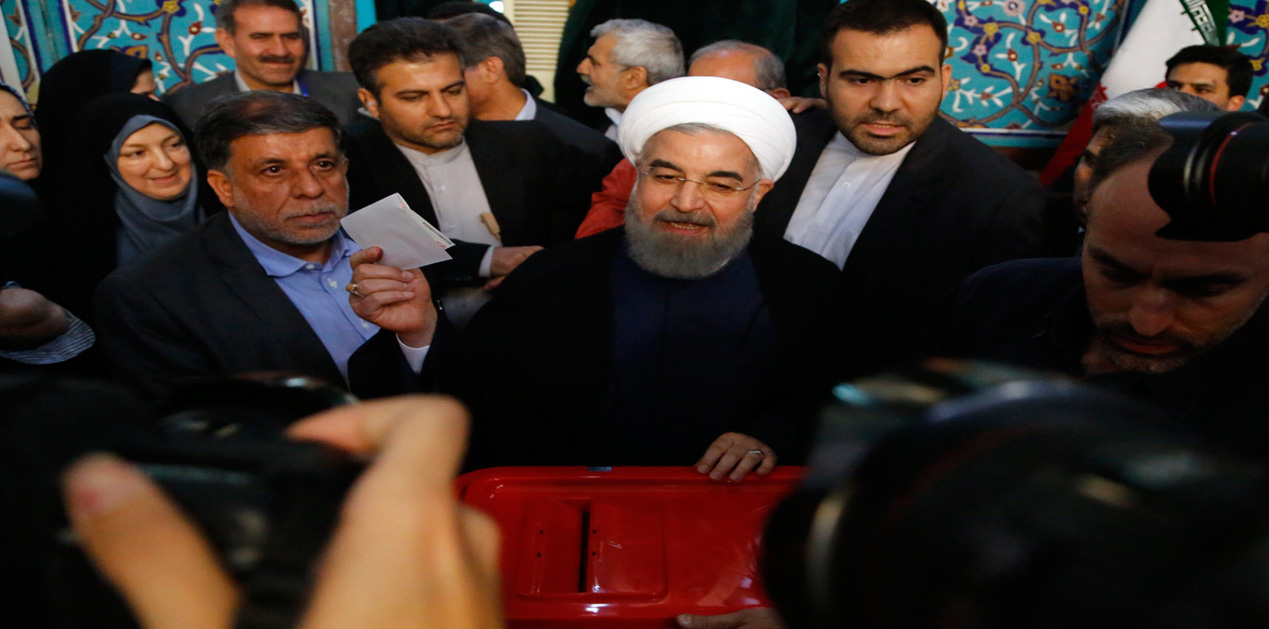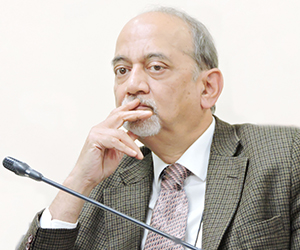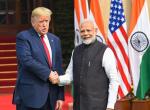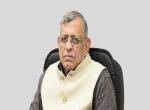Iran's just concluded 12th Presidential election attest the stability of the Iranian system. The election witnessed high voter turn-out of above 73 percent. Rouhani won 57 percent or 23,549,616 votes out of total of 40 million votes cast. He improved his marginfrom last time in 2013, when he obtained 50.7 percent votes. The vote has given popular mandate to President Rouhani to continue his policy of economic liberalisation at home, and engagement with the international community abroad. It is also a vindication of the nuclear deal, or 'Barjam'.
The election was fought between ''Principlists' and 'Reformers'. The ‘Principlists’ are seen as favouring a conservative course. The Reformers favour a more evolutionary approach to socio-economic issues. The former was represented by Hojatessalam Ebrahim Raeisi, an ex-member of judiciary and head of Imam Reza Foundation, one of the two most influential religious foundations in the country. There were two other candidates belonging to the ‘Principlists’ group - Tehran Mayor Mohammad Baghar Ghalibaf and Mostafa Mirsalem, a former Minister of Culture and Islamic Guidance. The Reformist group was represented by the sitting President Rouhani. There were two other candidates belonging to this group - Jehangiri, former First Vice President and Mostafa Hashemite Taba, former Minister of Physical Education.
Prior to the elections, three sets of televised debates took place between the Presidential candidates. The debates focused on foreign policy and socio-economic issues, and the way forward. The ‘Principlist’ group attacked the Rouhani Administration as favouring the elite numbering 4 percent of the population. It promised more jobs, and increase of subsidy. The ‘Reformist’ group highlighted the performance of the government, which had seen lifting of sanctions, and increase in crude oil exports. Interestingly, close to the election, the ‘Principlist’ group also expressed support for the nuclear agreement with P5+1, though it criticized Rouhani government for not getting enough out of the deal.
Initially, the crowded field with six candidates was seen as an attempt to divide the votes, and force Rouhani into second round of voting. The second round usually favors conservative group with higher voters turn out in rural areas. After the last Presidential debate, Ghalibaf, Tehran Mayor withdrew his candidature in favour of Ebrahim Raeisi. This was followed by withdrawal of Jehangiri, First Vice President in favour of Rouhani. The withdrawals were a sign of tightening of the race. In the event, Rouhani clinched the election with a wide margin over Raeisi, who mustered 15,449,786votes or 38.75 percent as against 23,549,616 or 57 percent of total votes cast.
President Rouhani's performance was all the more commendable, as the elections took place after the demise of Ayatollah Rafsanjani. During the 2013 Presidential elections, support of Rafsanjani, along with Khattami - two former Presidents, was crucial in ensuring Rouhani's victory. This time around, he has won with higher margin, without the support of Rafsanjani, who is no more. He also had to battle against anti-incumbency factor. The clergy based in Qom, a major theological center, had supported Ebrahim Raeisi. Raeisi himself was appointed head of Imam Reza Foundation in Mashad, another major theological Center and home of Supreme Leader, Ayatollah Khameini. Apart from senior clergy, Raeisi also enjoyed support of Islamic Revolutionary Guards Corps (IRGC), and Basij, a more numerous vigilante group, functioning in conjunction with the former. Thus, Rouhani faced a formidable opponent.
President Rouhani had taken over from Ahmedinejjad in 2013, when Iran was facing a grave economic situation. The GDP growth was negative. The sanctions had halved Iran's crude oil exports to around 1 million barrel per day. This was partially off-set by high oil prices, which were around USD 110 per barrel at the time. After mid-2014, decline of oil prices removed this cushion. The trend accelerated after November 2014. By February, 2015, the oil price had touched a bottom of USD 27 per barrel. Under President Rouhani, Iran's GDP growth is back in positive territory. With above 5 percent growth, Iran is the fastest growing economy in the region. Oil exports have climbed back to 2.2 million barrel per day. Lifting of sanctions under the nuclear deal has helped. But higher growth is a remarkable achievement, since oil price are nearly half of pre-2014 levels. Inflation has been brought down to 14 percent from the high of 35-40 percent in 2013, when Rouhani took over. Unemployment remains high, and was an issue in the Presidential elections.
The improvement of macro-economic figures is not without cost. Rouhani Administration had to roll back subsidies. This was a courageous decision. The fuel subsidies were phased out. Individual subsidies were also reduced to 45,000 tomans or around 15 dollars per head per month. The Iranian government has tried to reduce leakage by limiting the benefits to targeted group. This too became an issue in the elections. Most contentious has been the attempt to limit the role of companies controlled by IRGC in economy. As President Rouhani stated in his election speeches, this was necessary to provide level playing field to the private sector. This process has to go some way.
Lifting of sanctions did not quite bring the expected benefits due to continued banking difficulties. Major international banks still retain a cautious approach, and watch the U.S. position. Despite the campaign rhetoric, Trump Administration has maintained US commitment to the nuclear deal struck by Iran with P5+1. Following Iran's missile tests soon after Trump took office, U.S. imposed sanctions against Iranian and Chinese companies engaged in missile proliferation. But this does not affect secondary, nuclear related US sanctions, which have been lifted under the Joint Comprehensive Plan of Action (JCPOA). On the eve of elections, the U.S. also gave the waiver required under the National Defence Authorisation Act, 2012, while announcing continued inter-agency review of Iran’s policies.
The European companies were quick to return to the Iranian market after lifting of sanctions. This trend will accelerate after Iran's Presidential elections. Re-election of Rouhani, and U.S. waiver, will give more stability to business climate. Airbus has concluded a deal worth more than USD 20 billion to supply civilian jetliners. Three of these aircrafts have already arrived. Recently, Iran took delivery of ATR aircrafts, also of European origin. Mercedes, Volvo, Peugeot are not simply selling in Iranian market, but have established plants in Iran. Apart from EU companies, U.S. has also concluded a deals in Iran worth more than USD 20 billion.
India is discussing major projects in Iran, viz, Chabahar port and International North South Transit Corridor (INSTC). The port project is awaiting completion of some formalities for release of USD 150 million credit promised by India. Recently, an EXIM Bank delegation visited Tehran for discussions with Iranian authorities. The port project needs to be supplemented with investment in Chabahar Free Trade Zone and development of Chabahar - Zahedan railway line. The development of Free Trade Zone will help generate traffic for the port. Railway line will improve connectivity with Afghanistan and CIS countries. India is prepared to make major investment for development of Farzad B, an off-shore gas block, at a time when most international oil companies are cutting down capital expenditure on account of low oil and gas prices. India is one of the largest buyer of Iranian crude. Indian presence in the upstream sector will also bind together a major customer to Iran. There is a natural convergence between India's fast growing economy, and Iran's surplus hydro-carbon resources. International North-South Transit Corridor (INSTC) is another promising area of co-operation. This will give Indian exports access to Central Asian as well as Russian markets. A trial run was held in 2014. This was followed by visit of a Commerce Ministry delegation to Inchebarun, land crossing on Iran -Turkmenistan border. Recently, India has signed TIR convention, which will facilitatemovement of Indian goods across borders.
There is need to strengthen bilateral banking arrangements. Despite lifting of nuclear related sanctions, banking difficulties remain. At the height of sanctions, the two countries sustained oil and non-oil trade by working out a rupee payment arrangement. It should be easier to find satisfactory banking solutions after lifting of sanctions. PM Modi's land-mark visit to Tehran in 2016 provided political impetus to bilateral relations. However, there is need for timely implementation. INSTC and development of Chabahar port could be India's answer to OBOR initiative of China.
(The author, a VIF Distinguished Fellow, is a former Ambassador to Iran)
Image Source: http://christiannewstoday.com











Post new comment